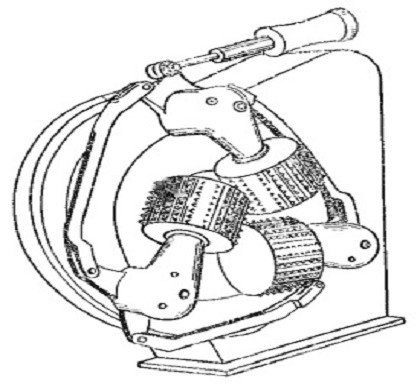Despite the high level of technological development today there are still some sectors of industry which need optimization of their technological processes. Researchers from South Ural State University are working on one of these fields.

New Solution for Machine Tool Building
Among these projects is Speed-Coordinated Electrical Drives in Wood-working Machines. The team of researchers from the SUSU Polytechnic Institute has set a goal for themselves of modernizing and improving the quality of products of the wood-working industry. Artyom Zheltov, Master’s student of the Department of Automatic Electric Drives and author of this project, shares on how wood-working machines will be improved.
“The current state of machine tools for the wood-working industry is at a low level as we use unregulated drives and obsolete technologies. The production of these machine tools in the post-Soviet age is falling behind the production of analogs abroad. Issues related to drives are not being solved at present. We are suggesting the implementation and improvement of terminal parameters of regulated drives. The use of a regulated drive with a speed-coordinating system will make it possible to improve the quality of products by up to 20% and increase the chances of the machine tools working without fail.”
What Problems Will Be Solved?
The main reason for the lowered quality of manufacturing, fast resource use by equipment, and equipment failing is impact loads. The team of researchers of the SUSU Polytechnic Institute is working on developing a system of speed coordination which will make it possible to bring machine-tool building to a new, higher level.
“Thus, the system of a debarking machine tool consists of 3 parts. These are cylindrical feed rollers, i.e. three cylindrical rolls located at a 120-degree angle, with serrations. They pull a log in to the machine. In the center there is a bark-removing mechanism, consisting of several blades that rotate and remove the upper layer off timber. The delivery system consists of several tubes rotating in the opposite direction and pulling the log out of the machine. The thing is that the drives of these rolls themselves are fed by the power of one engine. And if a log is not heated up or not properly treated, then skewing occurs. Since the whole system depends on one engine which begins rotation by means of chain gears, the loads are distributed between the rolls unevenly. Accordingly, skewing occurs here as well. This means that the blades on one side are removing practically nothing from the top layer of the log, they cut into the opposite side, and the machine stalls. The output system faces the same issue: when the log is only partially pulled out from the machine, skewing can occur, which stalls the machine. All of this affects the final quality of the product and significantly reduces the resources of the machine,” explains Artem Zheltov.
The new solution involves installing individual drives for each roll and connecting the drives with one another using a special algorithm. If skewing occurs, and the load on one of the drives is increased, a signal will be sent to the other two drives for them to even out the log.
.png)

Machines Will “Live” Longer
“The use of this algorithm makes it possible to reduce the risk of logs breaking inside the machine and the occurrence of various non-standard situations. In general, we can increase productivity and remove human factor. In addition, the life cycle and resources of these machines and their components will increase, especially of the bark-removing blades and other mechanisms, which are damaged in the process. We are also planning on developing a system which will make it possible to decrease energy use in idle time.”
At present, work on improving the algorithm is being carried out. The results of the research were shown in the article Speed-Coordinated Electric Drives in Woodworking Machines” in the journal IEEE Xplore, indexed in the Web of Science database. The researchers’ developments can be applied, first of all, to the production of wood for export and construction, and also when working with rolling machines. They can be used in any multi-engine systems where connections between several engines are especially important. The speed coordination system proposed by the researchers is promising for machine-tool building in general.




